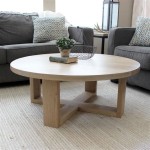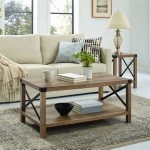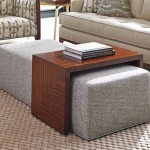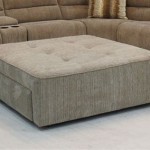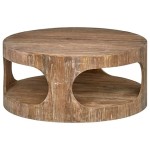How Thick Should A Glass Table Protector Be Cut To Size?
Selecting the appropriate thickness for a custom-cut glass table protector is a crucial decision that impacts both the functionality and aesthetics of the tabletop. The ideal thickness balances protection against scratches, dents, and spills, with the overall appearance and structural integrity of the table. Several factors influence this decision, including the table's material, size, and intended usage. Understanding these factors allows for an informed choice that optimizes the table protector's effectiveness and longevity.
Glass table protectors serve a variety of purposes. They shield vulnerable surfaces from the daily wear and tear associated with dining, working, or displaying items. They safeguard against accidental damage from dropped objects, heat exposure, and liquid spills. Furthermore, a glass protector can be easily cleaned, maintaining a hygienic surface for eating and other activities. Selecting the right thickness ensures that the glass protector effectively performs these functions without being overly bulky or fragile.
The term "cut to size" implies a degree of customization that addresses the variability in table dimensions and shapes. This bespoke approach is valuable because it ensures a perfect fit, eliminating gaps where spills or debris could accumulate and preventing the protector from shifting or sliding. A properly fitted glass protector enhances the table's appearance by presenting a seamless and integrated look.
Choosing the correct thickness requires a careful assessment of several key considerations. These include the table's vulnerability to damage, the expected level of use, the size and shape of the tabletop, and the desired aesthetic outcome. Neglecting any of these factors can lead to dissatisfaction with the final product, either due to inadequate protection or an unappealing visual impact.
Table Material and Vulnerability
The inherent resistance of the table's surface dictates the minimum thickness required for effective protection. For instance, delicate wood finishes, such as those found on antique or fine furniture, require a thicker protector to guard against even minor scratches and dents. Similarly, porous materials like marble or certain types of stone are susceptible to staining from spills, necessitating a robust barrier. In contrast, tables with durable laminate or resin surfaces may require a less substantial protector, primarily for preventing scratches and minor abrasions.
Wood tables, especially those with a delicate varnish or lacquer finish, are particularly vulnerable to damage. Even the simple act of placing objects on the table can leave scratches over time. Heat from hot dishes or cups can also damage the finish, leading to discoloration or blistering. Therefore, a thicker glass protector is recommended to provide a sufficient buffer against these potential hazards. Ideally, a thickness of at least 6mm (1/4 inch) would be appropriate for wooden tables prone to damage.
Tables made of glass or metal are less susceptible to scratches than wood, however, they are still vulnerable to other types of damage. Glass tables can chip or crack if struck with a hard object, while metal tables can dent or scratch if exposed to abrasive materials. For glass tables, a protector of similar thickness to the tabletop is often a good choice. For metal tables, a thinner protector might suffice, primarily to prevent scratches. Consideration should be given to the weight capacity of the glass table if adding an additional glass protector layer.
Stone tabletops, such as granite or marble, are durable but can still be damaged by acidic substances or staining agents. A glass protector can prevent these substances from penetrating the stone's surface. The thickness of the protector will depend on the type of stone and its porosity. For porous stones, a thicker protector is recommended to provide a more comprehensive barrier. A thickness of 6mm (1/4 inch) or greater is generally advisable for stone tables.
Level of Use and Potential for Impact
The frequency of use and the types of activities performed on the table directly influence the required thickness of the glass protector. Tables in high-traffic areas, such as dining rooms or conference rooms, are subjected to more potential hazards than tables used primarily for decorative purposes. Similarly, tables used for activities involving potentially damaging items, such as arts and crafts or model building, require a thicker protector to withstand accidental impacts or spills.
In high-traffic areas where the table is used frequently for meals, drinks, and general use, the risk of spills and scratches is significantly higher. In these situations, a thicker protector is advisable to handle the increased wear and tear. A thickness of 8mm (5/16 inch) or even 10mm (3/8 inch) may be appropriate for dining tables that are used daily by families or in commercial settings.
For tables used for specific activities that involve sharp objects, heavy items, or potentially hazardous materials, a thicker protector is essential. For example, a table used for crafting or model building might require a protector that is 10mm (3/8 inch) or thicker to prevent damage from accidental drops or spills of paint or glue. Similarly, a coffee table that is frequently used to hold drinks and snacks should have a protector of at least 6mm (1/4 inch) to prevent staining and scratches.
If the table is primarily used for decorative purposes and receives minimal use, a thinner protector may be sufficient. In these cases, the primary purpose of the protector is to prevent dust and minor scratches. A thickness of 4mm (5/32 inch) or 5mm (3/16 inch) may be adequate for tables that are primarily used for displaying decorative items.
Size, Shape, and Support of Tabletop
The dimensions and shape of the table, as well as the structural support it provides, also influence the optimal thickness of the glass protector. Larger tables, particularly those with limited support, require a thicker protector to prevent bowing or sagging, which can lead to cracking or instability. Similarly, irregularly shaped tables may benefit from a thicker protector to ensure uniform load distribution and minimize the risk of stress concentrations.
For larger tables with a significant unsupported span, a thicker glass protector is necessary to provide adequate structural support. The glass protector effectively acts as a structural element, distributing weight evenly across the tabletop and preventing sagging. A thickness of 8mm (5/16 inch) to 10mm (3/8 inch) or even thicker may be required for large tables to ensure stability and prevent cracking.
For tables with unconventional shapes, such as round, oval, or irregularly shaped tabletops, the distribution of weight is more complex than with rectangular tables. A thicker glass protector can help to evenly distribute the weight and prevent stress concentrations in certain areas of the tabletop. This is particularly important for tables with sharp corners or narrow sections, which are more prone to cracking.
The type of support provided by the table's legs or base also influences the required thickness of the glass protector. Tables with multiple legs or a solid base provide more support than tables with only a few legs. If the table has limited support, a thicker glass protector is necessary to compensate and prevent sagging. Conversely, if the table has ample support, a thinner protector may be sufficient.
Ultimately, determining the ideal thickness for a cut-to-size glass table protector requires a careful evaluation of the specific characteristics of the table, its intended use, and the desired aesthetic outcome. Consulting with a glass professional is recommended to ensure that the chosen thickness provides adequate protection, structural support, and aesthetic appeal.

Table Top Tempered Glass

Glass Table Tops A Complete Guide

What Is The Best Thickness For A Glass Table Top Cbd

Fab Glass And Mirror 20 In X 40 Clear Rectangle Table Top 1 2 Thick Flat Edge Polished Tempered Radius Corner T 20x40rec12thf The Home Depot

Buy Custom Clear Pvc Table Protector Bespoke Sizes 1 5mm Thick

Fab Glass And Mirror 42 In X 60 Clear Rectangle Table Top 1 2 Thick Beveled Tempered Radius Corners T 42x60rec12thb The Home Depot

Clear Table Cover Protector 2mm Thick 84 X 40 Inch For Dining

Transpa Clear Plastic Table Protector Cover Thickness 1 5 Mm Water Heat Resistant Premium Desk Finland

Ostepdecor Clear Table Protector 2mm Thick 24 X 48 Inch Cover Plastic Desk Mat Pad

Etechmart Clear Pvc Table Top Protector Thick Multi Size
Related Posts

